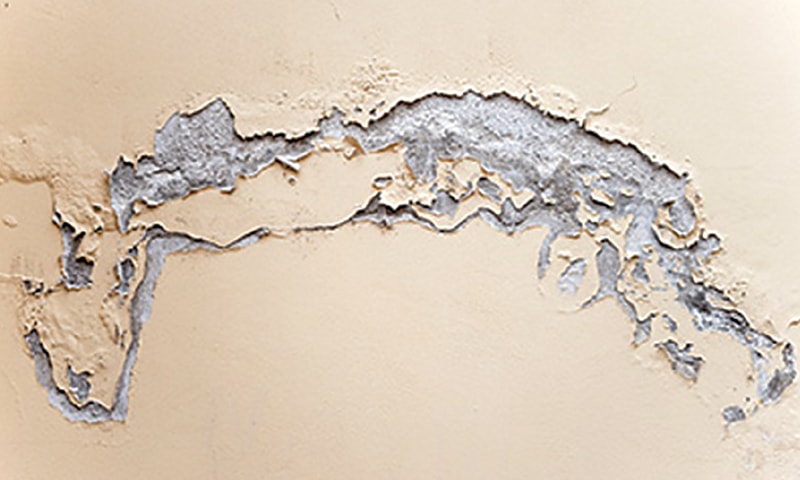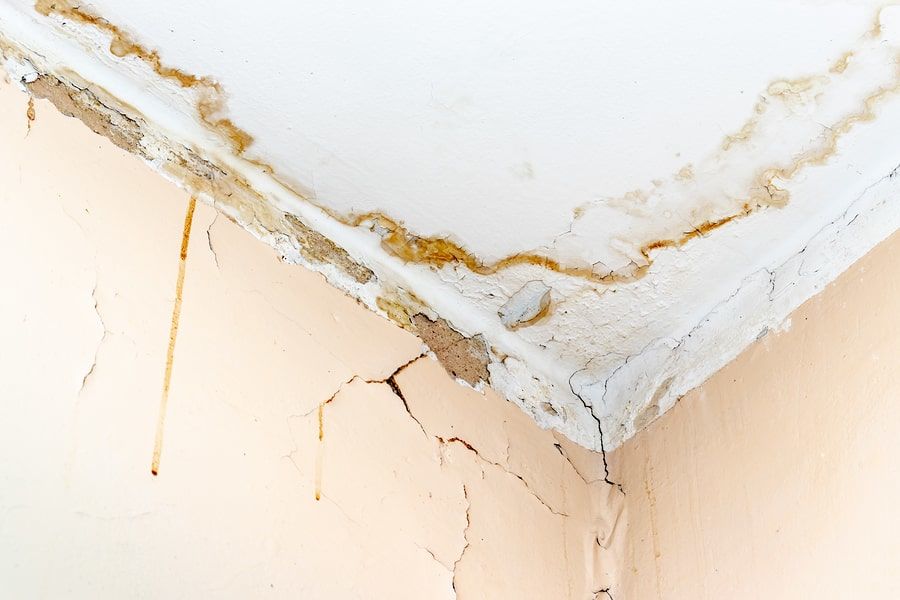Have you ever had to deal with moldy yellow spots on your bathroom or bedroom walls? People wonder where the water came from when they encounter these cases of water seepage and leakage in their homes or workplaces.
Not only does it make the room look bad, but it could also mean there are cracks in the concrete structure of the ceiling or floor. This can cause water to leak under the concrete.

Photo Courtesy: Waterproofing Specialist
RELATED: Shower waterproofing options: a complete guide
What is Water Seepage?
Water seepage occurs when water travels through small holes or porous materials from one location to another. It’s a problem that commonly happens after a heavy rain when soil moisture levels rise, building hydrostatic pressure against the foundation of your home. Water seeps into your home through the tiniest holes in your basement’s floor and walls because of this pressure. Water might also leak in through the cracks in the foundation walls.
What are Signs of Water Seepage?

Photo Courtesy: Dawn
Water seepage can be difficult to detect, but there are indicators you can look for if you’re unsure. Here are some of them.
- You’ll notice a decrease in indoor air quality because of all the extra moisture.
- Your basement will smell musty and feel more humid than before.
- You might also see unsightly cracks, bubbling, peeling, warped paint, or stains on your walls, all of which show that moisture is present in your home’s foundation.
- Appliances in your basement get rusty.
The most clear sign of water seepage is a pool of water on the floor.
RELATED: WATCH: How to fix wall water streaks according to Slater Young
What Causes Water Seepage?
A lot of factors can trigger water seepage:
- Improper concrete sealing of pipes, resulting in water flowing out of the walls
- Water seepage via joints between installations such as sinks, windows, doors, and bathtubs from weakened joints.
- External wall cracks that allow rainwater to leak through inside.
- Air conditioning condensation, piping system failure.
- Roof leaks caused by roof system or waterproofing system cracks.
- Basement leaks that run through the walls or up from the floor.
RELATED: Waterproofing rooftops in 5 easy steps
Consequences of Water Seepage

Photo Courtesy: Everdry Waterproofing of Indianapolis
Excess water, without a doubt, has several consequences. You put your basement at danger for mold and mildew if you don’t treat water seepage straight away. Mold, unfortunately, isn’t only an aesthetic issue; it poses a health risk to you and your family.
Mold removal is also not a simple task; from carpet removal to drywall repair, removing mold is both costly and time-consuming.
If water gets into an electrical component, it might cause a short circuit, which can cause a fire.
The worst thing about water seepage is that it can damage your foundation, resulting in major structural instability such as foundation sinking, unsettling, and, ultimately, collapse in a matter of seconds. It will not only put your structure’s safety in jeopardy, but it will also put a lot of stress on your wallet because the repair job has gotten extremely expensive.
Subscribe now to see more content like this in the future!
CITATIONS:
What is Water Seepage and How You Can Prevent It. (2021, January 25). Key Vendors. Retrieved January 19, 2022, from https://keyvendors.com/blogs/what-is-water-seepage-and-how-you-can-prevent-it/
Symptoms of Water Seepage Problem. (n.d.). SWC Construction. Retrieved January 19, 2022, from https://swcconstruction.com.sg/blogs/symptoms-of-water-seepage-problems/
![]()








